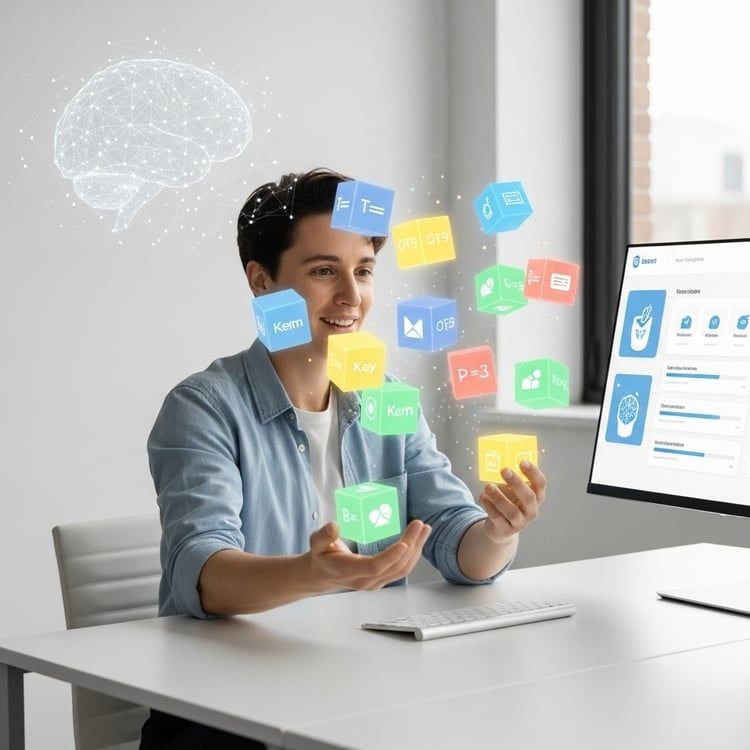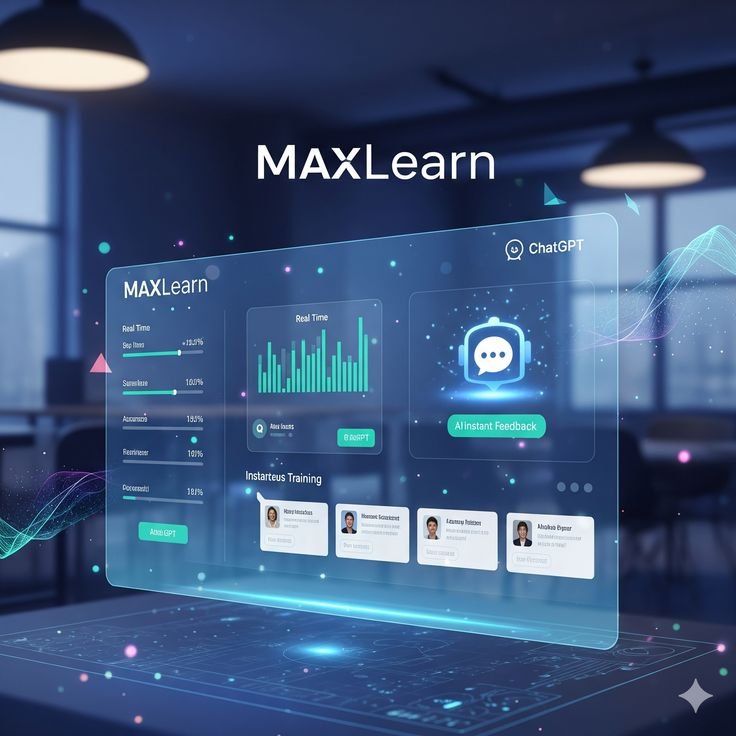Introduction
The way we learn has evolved dramatically in the last few decades. Gone are the days when education meant long classroom lectures, endless textbooks, and hours of note-taking. In today’s fast-moving digital world, people want learning that is quick, flexible, and immediately useful. This is where learning steps in.
This is the art of breaking down complex concepts into small, bite-sized lessons that can be consumed in just a few minutes. Instead of sitting for an hour-long lecture, learners can watch a 5-minute video, read a short infographic, or attempt a quick quiz—all of which cover specific, focused objectives. Over time, these small steps accumulate into meaningful knowledge and skills.
The best part about learning is that it fits perfectly into daily routines. Whether you are a student preparing for exams, a working professional trying to upskill, or a lifelong learner exploring hobbies, learning enables you to study without disrupting your schedule. Learning while commuting, during coffee breaks, or before going to bed becomes a natural habit.
This article will explore learning in detail—its definition, psychology, applications, benefits, challenges, strategies, and its role in shaping the future of education and training. By the end, you will see why “small daily steps” are the key to long-term learning success.

1. What is Microlearning?
At its core, learning is a learner-centered approach that delivers knowledge in short, focused bursts. The lessons usually last between 2 to 10 minutes and cover one specific concept or skill at a time. Instead of overwhelming learners with too much information, microlearning focuses on clarity, precision, and relevance.
At its core, learning is a modern, learner-centered approach to education that focuses on delivering knowledge in short, focused bursts rather than long, overwhelming lessons. Traditional learning methods often involve hours of lectures, lengthy textbooks, or extended training sessions. While this approach can provide depth, it often leads to fatigue, distraction, and reduced retention. Learning solves this problem by offering learning experiences that usually last 2 to 10 minutes, each targeting a specific concept, skill, or task.
The strength of learning lies in its clarity, precision, and relevance. Instead of bombarding learners with multiple ideas at once, each module focuses on just one learning objective, ensuring that learners can absorb the material without confusion. For example, instead of a one-hour session on “Digital Marketing Strategies,” a learning module may simply cover “How to Write an Engaging Social Media Post” in five minutes. This single, practical lesson is easier to understand, apply, and remember.
Learning also embraces flexibility. Lessons can be delivered through short videos, infographics, podcasts, flashcards, interactive quizzes, or even simple text-based tips. Because of this adaptability, learners can access content anytime and anywhere, whether during a coffee break, while commuting, or before bedtime.
Another distinguishing feature is its focus on retention. Since Learning aligns with how the human brain processes information—small chunks over spaced intervals—it prevents cognitive overload and improves long-term memory. By keeping lessons short and repetitive, learners are more likely to recall and apply knowledge in real-life scenarios.
In simple terms, Learning transforms education into a manageable, enjoyable, and efficient process. By focusing on small steps, it empowers learners to gradually build expertise without feeling overwhelmed—proving that sometimes, less truly is more.
Key Characteristics of Microlearning:
- Short Duration – A lesson can be completed in minutes.
- Targeted Focus – Each session deals with a single topic or skill.
- Flexibility – Accessible anytime, anywhere—ideal for mobile learning.
- Interactive and Engaging – Uses videos, flashcards, quizzes, podcasts, or games.
- Retention-Oriented – Reinforces knowledge through repetition and practice.
For example, instead of a two-hour training on workplace safety, learning would divide the session into multiple short modules: “How to use a fire extinguisher,” “Emergency exit guidelines,” and “Basic first aid steps.” Each module takes only 5 minutes but collectively provides complete training.
Learning is not just about making lessons shorter—it’s about making them smarter.
2. Why Microlearning Fits into Daily Life
One of the biggest strengths of learning is its ability to blend seamlessly into daily schedules. In today’s busy world, learners struggle to find large chunks of uninterrupted time. Learning solves this problem by offering knowledge in a format that fits into even the tightest routines.
One of the greatest advantages of Learning is that it fits naturally into our busy, modern lifestyles. In today’s world, most people juggle multiple responsibilities—work, studies, family, and personal commitments—which makes it difficult to dedicate long, uninterrupted hours to Microlearning. Traditional learning often demands extended sessions, which many learners find impractical. Learning, however, eliminates this challenge by breaking knowledge into short, focused lessons that can easily fit into small pockets of free time throughout the day.
For example, a professional can watch a 5-minute tutorial during a coffee break, a student can revise key terms while commuting, and someone interested in self-improvement can listen to a quick podcast before bed. These small yet consistent steps help learners stay engaged and progress steadily without feeling pressured or overwhelmed.
This daily integration is also supported by the flexibility of digital tools. Mobile apps, online platforms, and social media channels make microlearning accessible anytime, anywhere. Instead of forcing learners to adjust their schedules, microlearning adapts to the learner’s lifestyle.
By blending with routine activities, microlearning transforms education from a demanding task into a natural, everyday habit, proving that effective Microlearning doesn’t always require long hours—it only requires consistency.
How Microlearning Fits Daily Life:
- Commuting Time – Learners can listen to podcasts or watch videos while traveling.
- Coffee or Lunch Breaks – A quick quiz or flashcard session during short breaks.
- Before Sleeping – Reviewing daily lessons for 10 minutes before bed.
- Waiting Periods – Learning while waiting for appointments or meetings.
For instance, a student preparing for exams can use a flashcard app to revise 10 words daily during their commute. Within a month, they’ll have mastered 300 new terms without spending extra time outside their schedule.
These micro-sessions ensure that Microlearning becomes a daily habit, just like brushing teeth or exercising, making education part of everyday life rather than a separate task.
3. The Psychology Behind Microlearning
The effectiveness of microlearning is backed by cognitive science and psychology.
- The Spacing Effect
Research shows that information is retained better when Microlearning is spread over time rather than crammed into one session. Microlearning supports spaced repetition, allowing learners to revisit concepts frequently. - Cognitive Load Theory
Our brain has limited capacity for processing information. Long lectures often overload working memory, leading to poor retention. Microlearning reduces this load by focusing on one concept at a time. - Habit Formation
According to behavioral psychology, habits are built through small, repeated actions. Microlearning encourages daily engagement, turning education into a natural routine. - Active Recall & Retrieval Practice
Microlearning often includes quizzes and short assessments that require learners to recall information, strengthening memory pathways.
This alignment with natural brain processes is why microlearning feels effortless yet highly effective.

4. Benefits of Microlearning in Daily Life
Microlearning is not just a convenient way to learn—it offers several powerful advantages that make it one of the most effective approaches to education and skill development in today’s fast-paced world.
1. Flexibility and Accessibility
One of the most significant benefits is flexibility. Learners can access short modules anytime, anywhere, whether through a mobile phone, tablet, or laptop. This makes it possible to learn while commuting, during a lunch break, or before bed, without disrupting daily routines.
2. Improved Engagement
Traditional long lectures often test patience and attention spans. Microlearning, on the other hand, keeps learners engaged by offering short, focused, and interactive content. Quizzes, flashcards, short videos, and gamified lessons keep the process enjoyable.
3. Better Retention of Knowledge
Microlearning aligns with how the human brain works. By presenting information in small, digestible chunks, it reduces cognitive overload and enhances memory retention. Repetition of short lessons ensures that concepts are remembered longer.
4. Time and Cost Efficiency
Learners save time by focusing only on specific skills or concepts rather than spending hours in training. For organizations, it reduces training costs by creating modular, reusable content.
5. Encourages Continuous Learning
Because lessons are short and easy to complete, learners are more likely to engage in daily Microlearning. Over time, this builds a habit of continuous self-improvement, making education a natural part of life.
In short, microlearning combines convenience, efficiency, and effectiveness. It respects the learner’s time, supports long-term knowledge retention, and encourages consistency—all of which are essential for success in both personal and professional growth.
5. Practical Examples of Microlearning in Daily Life
- Language Learning Apps – Duolingo teaches vocabulary in daily 5-minute sessions.
- Professional Skills – LinkedIn Learning offers short tutorials for career growth.
- Corporate Training – Short compliance modules in workplaces.
- Fitness and Wellness – Meditation apps like Headspace guide users through 10-minute sessions.
- Skill Development – Platforms like Udemy and Coursera offer mini-courses in coding, design, and business.
These examples prove that microlearning has applications across education, career, and personal life.
6. Tools and Methods of Microlearning
Microlearning can take many forms:
- Infographics – Quick visual explanations.
- Short Videos – 3–5 minutes long, explaining one concept.
- Flashcards – Useful for memorization.
- Podcasts – Perfect for learning on-the-go.
- Simulations & Games – Interactive, engaging ways to practice skills.
- Quizzes & Polls – Reinforce understanding through active recall.
Each method caters to different Microlearning styles—visual, auditory, or kinesthetic.
7. Microlearning in Education
Educational institutions across the world are increasingly recognizing the value of microlearning as a way to support modern learners. With attention spans shrinking and digital tools becoming more widespread, schools, colleges, and universities are moving beyond traditional long lectures and textbooks to incorporate short, targeted Microlearning modules into their teaching strategies.
For instance, teachers may assign short explainer videos before class, allowing students to grasp basic concepts in advance. This approach, known as flipped Microlearning, ensures classroom time is used for deeper discussions and problem-solving rather than passive listening. Similarly, students can use flashcards, mobile apps, or daily quizzes to revise vocabulary, formulas, or key definitions in just a few minutes each day.
Microlearning also supports personalized learning, as learners can choose specific modules that match their pace and needs. A student struggling with math, for example, can practice with 5-minute interactive exercises daily, while another focusing on language Microlearning may review short grammar tips.
By breaking down complex subjects into manageable chunks, microlearning makes education less intimidating and more engaging. It empowers students to learn consistently, absorb knowledge effectively, and apply concepts in real-life situations—making learning both practical and enjoyable.
- Teachers assign short videos before class (flipped learning).
- Students use flashcards and apps for revision.
- Daily quizzes reinforce classroom teaching.
For example, instead of assigning a 50-page reading, a teacher might provide a 10-minute video summary with key points, making Microlearning less intimidating.
8. Microlearning in the Workplace
Corporations worldwide are increasingly embracing microlearning as an effective way to enhance employee training and development. In fast-paced business environments, organizations cannot afford to pull employees away from their work for long training sessions. Microlearning offers a practical solution by providing short, targeted lessons that employees can complete without disrupting their schedules.
For example, new hires can go through 5-minute onboarding modules covering company policies, workplace culture, or tools they will use daily. Similarly, employees can learn compliance rules, cybersecurity basics, or customer service skills through quick videos or interactive quizzes. Instead of overwhelming workers with dense manuals, these small lessons ensure clarity and higher retention.
This is also valuable for upskilling and reskilling. As industries evolve, employees can keep pace by accessing bite-sized tutorials on emerging technologies, leadership skills, or project management. Platforms like LinkedIn Learning and Coursera for Business provide organizations with vast microlearning libraries to support continuous growth.
Additionally, gamified elements such as badges, leaderboards, and progress trackers keep employees motivated and engaged. This not only boosts learning outcomes but also improves job satisfaction and productivity.
In short, microlearning transforms workplace training into a flexible, efficient, and engaging experience, helping businesses build stronger, future-ready teams.
Applications:
- Onboarding – New hires get small modules explaining company policies.
- Compliance Training – Workers learn safety guidelines through short videos.
- Skill Development – Employees upskill with 5-minute tutorials.
Companies like Google, IBM, and Deloitte have integrated microlearning into their training systems to enhance productivity and reduce costs.

9. Challenges of Microlearning
Despite its many advantages, microlearning is not without limitations. One of the most common challenges is fragmentation of knowledge. Since lessons are delivered in very short bursts, learners may struggle to see the bigger picture or understand how individual modules connect to form a complete concept. Without proper structure, microlearning can sometimes feel disjointed.
Another challenge is that not all subjects are suitable for microlearning. Complex topics such as advanced mathematics, medical training, or scientific research often require in-depth study and lengthy explanations that cannot be simplified into 5-minute lessons. In such cases, microlearning works better as a supplementary tool rather than the main method.
There is also the issue of over-reliance on technology. Most microlearning modules are delivered digitally through apps, videos, or online platforms. Learners without stable internet access or smart devices may find it difficult to benefit from this approach, widening the digital divide.
Finally, microlearning requires learner discipline and motivation. Since lessons are short and flexible, learners may procrastinate or skip sessions, reducing effectiveness. Without consistent practice, the impact of microlearning is limited.
These challenges highlight the importance of combining microlearning with traditional methods to create a balanced and effective learning experience.
- Fragmentation of Knowledge – Learners may not see the big picture.
- Not Suitable for All Subjects – Some complex topics require deep study.
- Dependence on Technology – Requires smartphones and internet.
- Learner Motivation – Without discipline, learners may skip sessions.
These challenges highlight the need to blend microlearning with other methods.
10. Strategies for Successful Microlearning
For microlearning to be truly effective, it must be designed and implemented with clear strategies that maximize both engagement and retention.
One of the most important strategies is to set clear and achievable goals. Each microlearning module should focus on one specific outcome, such as learning a definition, practicing a skill, or understanding a process. This ensures lessons are targeted and purposeful.
Another effective approach is gamification. By incorporating points, badges, leaderboards, or progress tracking, learners stay motivated and are more likely to complete their daily lessons. This sense of achievement helps transform learning into a habit.
Personalization also plays a crucial role. Microlearning platforms can adapt to the learner’s pace, strengths, and weaknesses, recommending content that best suits individual needs. This prevents repetition of what learners already know while addressing knowledge gaps.
Additionally, microlearning works best when it is blended with traditional methods. For complex subjects, short modules can serve as reinforcement or revision tools rather than the sole source of learning.
Finally, learners and organizations should track progress and provide feedback. Regular assessments and insights ensure consistency and long-term success.
When applied strategically, microlearning becomes a powerful, practical, and sustainable approach to continuous education.
- Set Daily Goals – Example: 10 minutes of study every day.
- Gamify the Process – Use points, badges, and rewards to stay motivated.
- Blend with Traditional Learning – Combine short lessons with longer sessions.
- Personalization – Use AI-based apps that adapt content to learner needs.
- Track Progress – Monitor daily achievements to build consistency.
11. The Future of Microlearning
The future of microlearning looks promising with AI, AR, and VR.
- AI will personalize lessons for each learner.
- Augmented Reality (AR) will allow learners to interact with 3D models in short bursts.
- Virtual Reality (VR) will create immersive environments for training.
As technology advances, microlearning will become even more engaging, personalized, and impactful.
Conclusion
Microlearning has redefined education by proving that small steps taken daily can lead to massive long-term success. It fits seamlessly into modern lifestyles, supports how the human brain learns best, and provides flexibility, engagement, and efficiency.
From students mastering subjects to professionals upgrading skills and companies training employees, microlearning is transforming the way we think about education.
In a world where attention spans are shrinking, microlearning is not just a trend—it is the future of lifelong learning.
Related Post: 7 Proven Fixes for Smartwatch Not Receiving Calls or Messages

